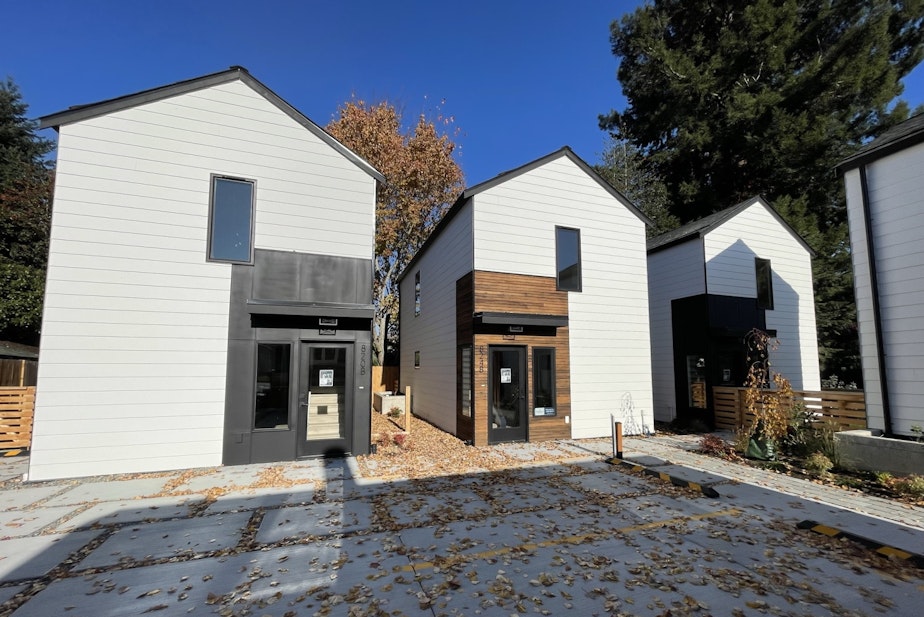More housing is on the way, but parking? Maybe not

One parking stall on small lots, two stalls on larger lots: That's all cities can require on middle housing developments, whether the project is a duplex or a six-unit building.
Parking is controversial among planners, because a parking stall can add thousands of dollars to the cost of a home and take up valuable land that could otherwise be housing or green space.
But neighbors often demand that developments have parking stalls, because streets can get crowded with parked cars.
The new middle housing bill that finally cleared the state Legislature this week compromises on parking, capping the number of parking stalls a city can require on each property at one stall, or two for larger lots (over 6,000 square feet). So if a developer puts in a duplex, that’s one to two parking stalls. If they put in a six-plex, that’s still just one to two parking stalls.
The remaining residents can park on the street or take the bus.
Cities can opt to go further — eliminating parking requirements altogether. For example, Seattle has already relaxed its own parking requirements near transit. The bill simplifies the process for cities that choose that route by exempting them from a lengthy environmental review process.
Sponsored
The bill also allows cities that want to require more parking to do so, but places the onus on those cities to prove the change is required for safety reasons.
No parking is required within half a mile of a major transit stop.
As the bill made its way through the Legislature, the definition of "major transit stop" was narrowed, so that it's not enough to be near a bus that comes every 15 minutes on a weekday. Now, a development has to be near a BRT (bus rapid transit) stop or a mode, such as light rail, that runs on a "fixed guideway system."
It's unclear at this time if that definition also covers King County Metro's trollies, which run on overhead electrical guideways through neighborhoods like Wallingford.
Sponsored
B
ackers of the bill say it could produce 200,000 new homes over the next 20-plus years, about 20% of the expected demand as the state continues to add residents.
Property owners will be able to build duplexes in small towns like Mill Creek and four-unit townhomes in medium-sized cities like Puyallup and Walla Walla.
In bigger cities like Spokane and Bellevue, people can build six-plexes, if two units are affordable, or if the development is within a quarter mile of a major transit stop.
The governor still has to sign the bill, and after he does, the changes won't be immediate.
Sponsored
All these cities are on different schedules to update their comprehensive plans, but after they do, these new forms of housing will begin to trickle into neighborhoods currently dominated by single-family homes.
Correction: Small cities like Ferndale and Aberdeen (populations under 25,000), mentioned in an earlier version of this story, are exempt unless they are inside a much bigger metro area, such as Seattle or Spokane. The story has been updated.


